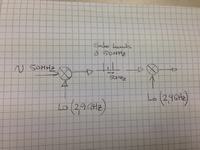ltrlspree
Member level 2
Hi there,
I am down converting with an active mixer a modulated signal at 2.9 GHz using an LO of the same frequency, the outcome should be in theory a sine of 50 MHz. (I know this was the original IF data)
On the bench I see this sine at the output of the mixer, but issue is I see a high level of AM modulation.....
I believe this to be a common issue while mixing two signals which are very far away from each other (50 MHz and 2.9 GHz)....could somebody point out some technical docs around this topic?
Thx
I am down converting with an active mixer a modulated signal at 2.9 GHz using an LO of the same frequency, the outcome should be in theory a sine of 50 MHz. (I know this was the original IF data)
On the bench I see this sine at the output of the mixer, but issue is I see a high level of AM modulation.....
I believe this to be a common issue while mixing two signals which are very far away from each other (50 MHz and 2.9 GHz)....could somebody point out some technical docs around this topic?
Thx
